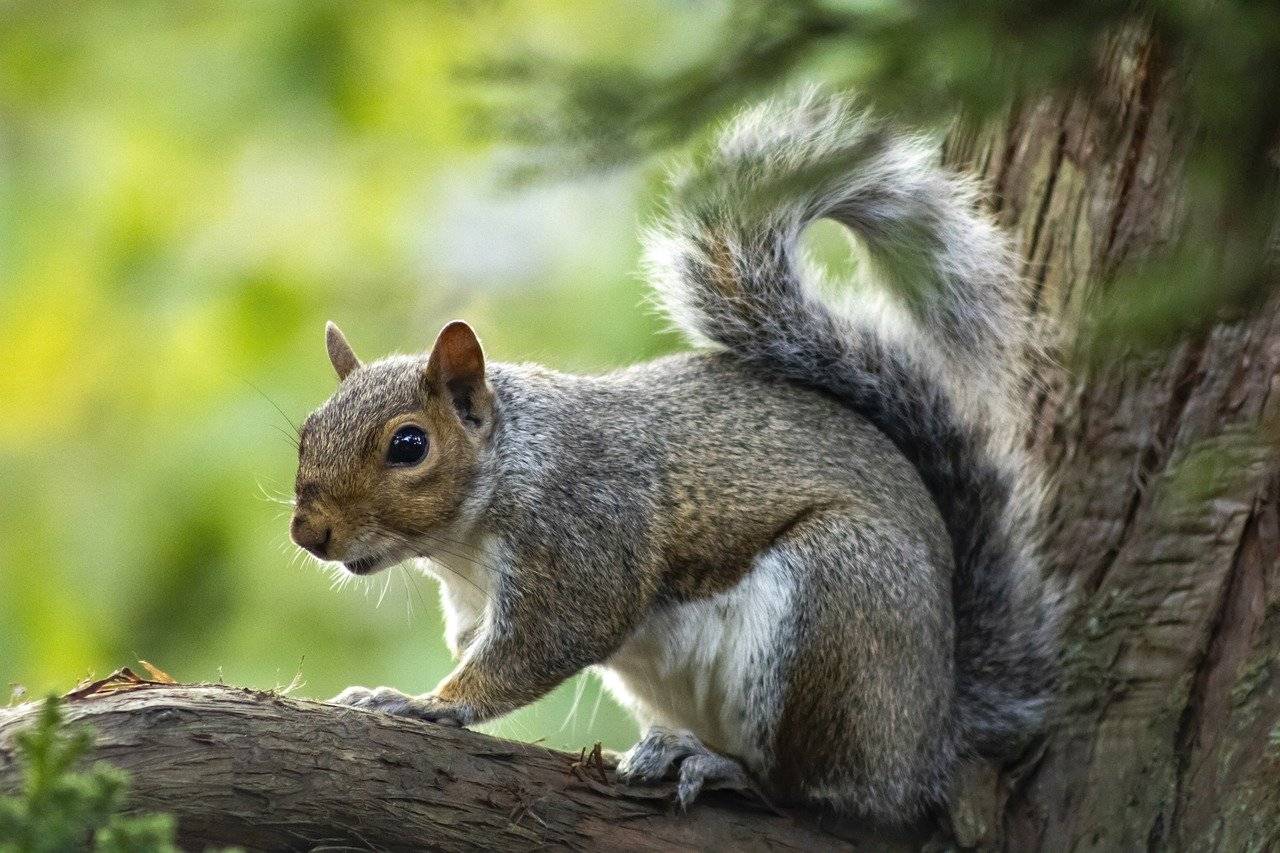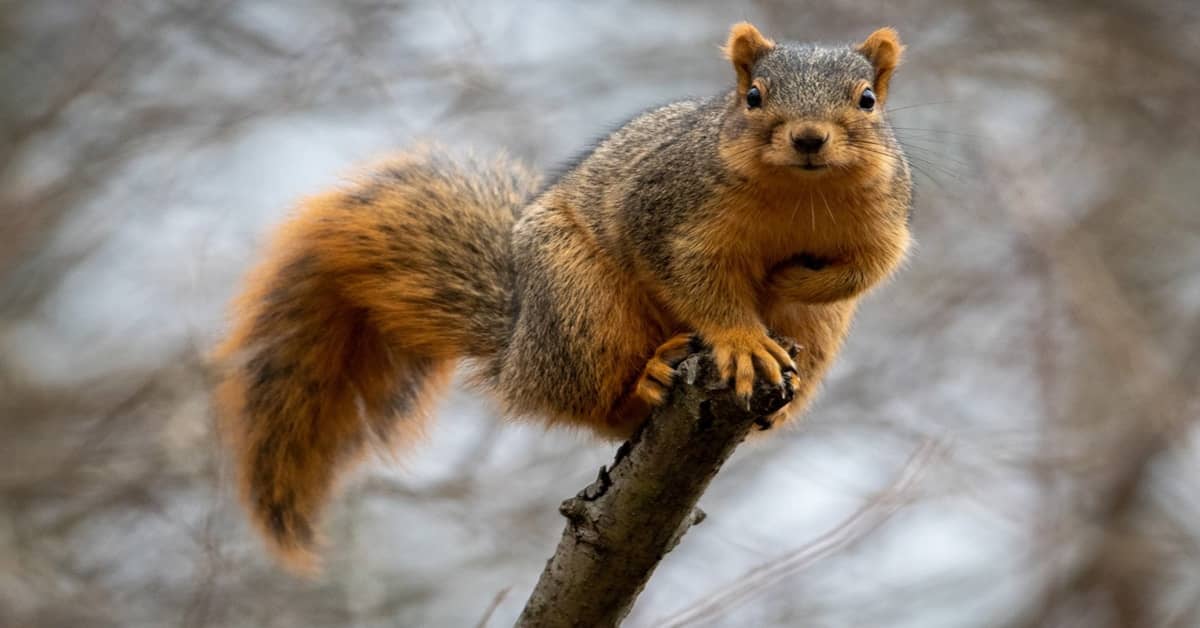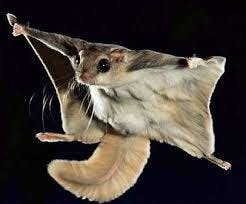Squirrels in Your Backyard
Pennsylvania is home to a variety of squirrel species, each with unique characteristics and behaviors. The most common types include the Eastern Gray Squirrel, the American Red Squirrel, the Fox Squirrel, and the Southern Flying Squirrel.
 Eastern Gray Squirrel Eastern Gray Squirrel |
The Eastern Gray Squirrel is perhaps the most familiar squirrel in Pennsylvania. These squirrels are known for their bushy tails, gray fur, and white underbellies. They are highly adaptable and thrive in both rural and urban environments. Eastern Gray Squirrels are often seen foraging for nuts, seeds, and fruits, and they are known to bury food for later consumption. Their ability to thrive in various habitats makes them a common sight in parks, forests, and even city streets.
 American Red Squirrel American Red Squirrel |
The American Red Squirrel is smaller than the Eastern Gray Squirrel and is known for its reddish fur and white underparts. Red Squirrels are highly territorial and are often found in coniferous forests, where they primarily feed on the seeds of conifer cones. They are known for their loud chattering and aggressive behavior, especially when defending their territory. Unlike the gray squirrel, the red squirrel often creates middens, which are piles of discarded cone scales, to mark its territory and store food.
 Fox Squirrel Fox Squirrel |
Fox Squirrels, the largest tree squirrels in North America, are also present in Pennsylvania, though they are less common than the gray and red squirrels. Fox Squirrels have a distinctive appearance, with a mix of gray, brown, and orange fur, and a bushy tail that is often tipped with black. They prefer open woodlands and are particularly fond of oak and hickory trees, where they find their primary food sources. Fox Squirrels are known for their robust size and their ability to leap significant distances between trees.
 Southern Flying Squirrel Southern Flying Squirrel |
Finally, the Southern Flying Squirrel is a nocturnal and arboreal species that often goes unnoticed due to its nighttime activities. These small squirrels have large, dark eyes adapted for night vision and a unique membrane called the patagium, which stretches from their wrists to their ankles, allowing them to glide from tree to tree. Southern Flying Squirrels are social animals, often nesting in groups to maintain warmth. They feed on a diet of nuts, seeds, fruits, and insects, and are commonly found in deciduous and mixed forests.

The Elusive Flying Squirrel
The southern flying squirrel is relatively common in Pennsylvania, found in mature deciduous and mixed forests throughout the state. Despite their prevalence, they are notoriously difficult to spot. These small, nocturnal rodents are most active at night, gliding silently from tree to tree in search of food. Their brownish-grey fur blends seamlessly with the bark of trees, providing excellent camouflage. Additionally, their shy and elusive nature means they often avoid areas frequented by humans, making encounters with these fascinating creatures rare. Their presence is usually only detected by the telltale signs they leave behind, such as gnawed nuts and acorns.
Also found in Pennsylvania is the norther flying squirrel, primarily inhabiting the cool, moist forests of the northern and central parts of the state. In Pennsylvania, the northern flying squirrel is endangered, listed as a priority species in the state’s Wildlife Action Plan, and protected under the Game and Wildlife Code. It is secure nationally.
Flying squirrels have skin flaps (patagia) that extend between the wrists and ankles, and a tail that is flattened top to bottom so they can steer when gliding from tree to tree. The northern flying squirrel travels principally by gliding, with an average distance of about 65 feet. Through a series of short jumps, it can reach a ground speed of eight miles per hour. Their large eyes are an adaptation for nocturnal activity. Northern flying squirrels are similar in appearance to the common southern flying squirrel, but can be slightly larger, with an overall body length of eight to 11 inches, compared to eight to 10 inches for its slightly smaller cousin.
Flying Squirrels Do Not Fly
Flying squirrels do not actually fly like birds or bats; instead, they glide. They achieve this remarkable feat using a special membrane called the patagium, which stretches from their wrists to their ankles. When a flying squirrel leaps from a high perch, it extends its limbs, stretching the patagium into a wide, parachute-like surface. This allows them to glide gracefully through the air, covering distances of up to 150 feet. The squirrel steers by adjusting the tension on the patagium and using its tail as a rudder, enabling precise control over its trajectory. Upon approaching its destination, the squirrel angles its body upward to reduce speed and land softly on its feet. This method of locomotion is highly efficient, allowing flying squirrels to move between trees swiftly while conserving energy and avoiding ground-based predators.

Flying Squirrel Building a Nest
Flying Squirrel Nesting Behavior
The southern flying squirrel exhibits fascinating nesting behavior, intricately tied to its survival and reproductive success. These small, nocturnal rodents typically construct their nests in the cavities of mature trees, such as oaks and maples, where they are sheltered from predators and harsh weather conditions. They may also use abandoned woodpecker holes, bird nests, or create leaf nests, also known as dreys, when tree cavities are scarce.
Southern flying squirrels line their nests with soft materials like shredded bark, leaves, moss, feathers, and grasses to provide insulation and comfort. These nests serve as resting places during the day, as southern flying squirrels are primarily nocturnal. During the colder months, they often nest communally, huddling together to conserve body heat. It’s not uncommon to find multiple individuals sharing a single nest, especially in winter.
Breeding season for southern flying squirrels occurs twice a year, once in late winter and again in mid-summer. After a gestation period of about 40 days, the female gives birth to a litter of 2-7 young. The newborns are altricial, meaning they are born blind, hairless, and entirely dependent on their mother. The female cares for the young in the nest, nursing them until they are weaned at around 2 months old. As the juveniles grow, they begin to explore outside the nest, practicing gliding and foraging under the watchful eye of the mother.
Nesting behavior is crucial for the southern flying squirrel’s lifecycle, providing a safe environment for rearing young and ensuring protection from predators and environmental stresses. The choice of nesting site and materials reflects the squirrel’s adaptability and resourcefulness in securing its needs in the wild.
We currently have a southern flying squirrel nesting in one of our songbird nest boxes. The flying squirrel started a nest in Bird Box 3 on July 22, 2024. Could this be a breeding nest? Come watch LIVE: https://pixcams.com/bird-nest-box-3/
 Southern Flying Squirrel Nest in PixCams Bird Box 3 Southern Flying Squirrel Nest in PixCams Bird Box 3 |
Watch Your Bird Feeders at Night!
Watching your bird feeders at night is probably the best way to see a flying squirrel because these animals are primarily nocturnal, meaning they are most active after dark. Southern flying squirrels, in particular, are known to visit bird feeders in search of easy food sources like seeds, nuts, and suet. As they glide silently through the night, your illuminated bird feeders become attractive dining spots.
Additionally, bird feeders are often situated in yards or gardens that provide a safe and convenient feeding area for these shy and elusive creatures. The presence of a steady food supply can encourage flying squirrels to visit regularly, increasing your chances of spotting them. Setting up motion-activated lights or cameras near your feeders can also help you observe their nighttime activities without disturbing them. The contrast between the dark night and the illuminated feeder can make the flying squirrels more visible, allowing you to witness their unique gliding behavior and feeding habits up close.

Flying Squirrels At Bird Feeder
Be sure to watch our PA Bird Feeder 2 at night. We often get southern flying squirrels on this feeder year round. Watch PA Bird Feeder 2 LIVE Here: https://pixcams.com/pa-bird-feeder-2/
Flying Squirrels Are Not Always CUTE
Southern flying squirrels are opportunistic feeders and will raid bird nests and nest boxes to access food. Their diet is diverse, including insects, fruits, nuts, fungi, and even bird eggs and nestlings when other food sources are scarce. These nocturnal creatures take advantage of the cover of darkness to raid nests, reducing the likelihood of encountering predators or humans.
They have keen senses and agile bodies, allowing them to navigate through trees and enter small openings in nest boxes or tree cavities where birds have built their nests. Once inside, they may consume eggs or young birds, which provide a rich source of protein. This behavior can be particularly detrimental to bird populations, especially if the flying squirrel population is high in a given area.
Birds that nest in boxes or cavities, such as bluebirds, chickadees, and woodpeckers, are especially vulnerable to these nocturnal raids. To mitigate this, bird enthusiasts often take preventive measures, such as installing predator guards or using nest boxes with smaller entrance holes that flying squirrels cannot easily access. Despite their cute appearance, southern flying squirrels can be quite resourceful and determined when it comes to finding food, making them both fascinating and formidable nocturnal raiders.

Flying Squirrel Raids Nest Box
In recent years we have seen increased predation of flying squirrels in our songbird nesting boxes. This includes raiding the nest for eggs and in some cases going after the birds. We have seen a large increase in the number of flying squirrels visiting our bird feeders and even screech owl boxes looking for food.
Conclusion
The southern flying squirrel population in Pennsylvania is considered stable and relatively common. These adaptable rodents thrive in the state’s mature deciduous and mixed forests, where they find ample food sources and suitable nesting sites. Despite being elusive and nocturnal, they are well-distributed across Pennsylvania, inhabiting both rural and suburban areas with sufficient tree cover.
The southern flying squirrel is not currently listed as threatened or endangered in Pennsylvania, thanks to its adaptability and the abundance of appropriate habitats. However, their populations can be influenced by factors such as deforestation, habitat fragmentation, and changes in forest composition. Conservation efforts aimed at preserving mature forests and maintaining biodiversity are essential for sustaining healthy populations of southern flying squirrels.
Regular monitoring and research help track their population trends, ensuring any potential threats can be identified and addressed promptly. Overall, while the southern flying squirrel faces some ecological challenges, its population in Pennsylvania remains robust due to the state’s favorable forested landscapes and ongoing conservation practices.


